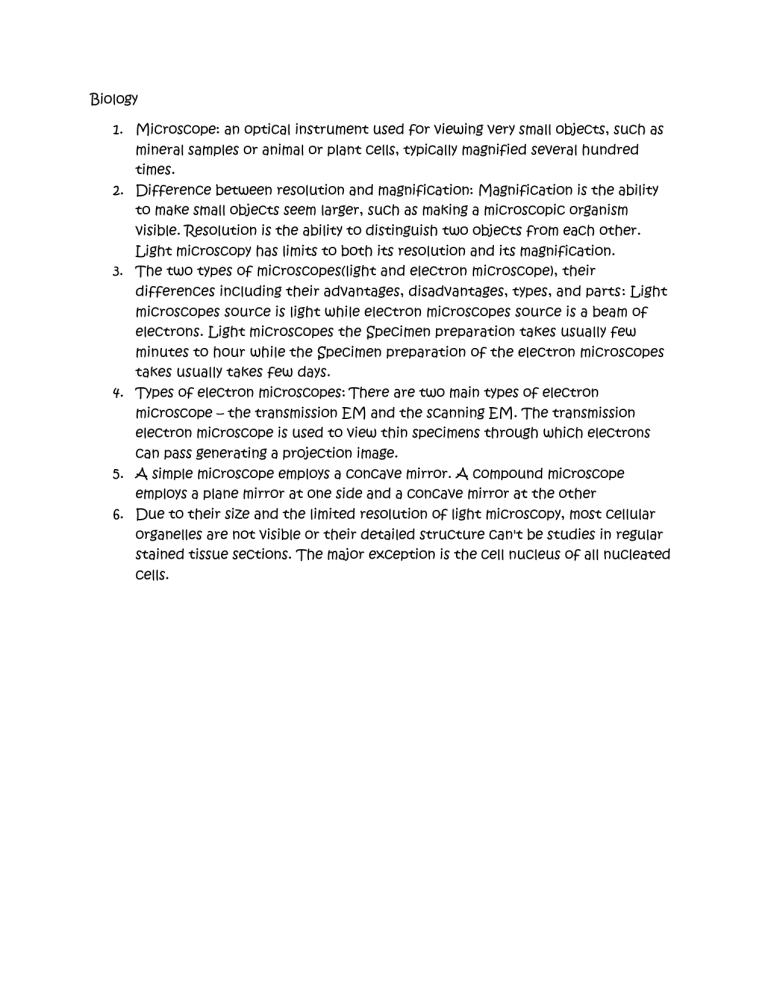
Biology 1. Microscope: an optical instrument used for viewing very small objects, such as mineral samples or animal or plant cells, typically magnified several hundred times. 2. Difference between resolution and magnification: Magnification is the ability to make small objects seem larger, such as making a microscopic organism visible. Resolution is the ability to distinguish two objects from each other. Light microscopy has limits to both its resolution and its magnification. 3. The two types of microscopes(light and electron microscope), their differences including their advantages, disadvantages, types, and parts: Light microscopes source is light while electron microscopes source is a beam of electrons. Light microscopes the Specimen preparation takes usually few minutes to hour while the Specimen preparation of the electron microscopes takes usually takes few days. 4. Types of electron microscopes: There are two main types of electron microscope – the transmission EM and the scanning EM. The transmission electron microscope is used to view thin specimens through which electrons can pass generating a projection image. 5. A simple microscope employs a concave mirror. A compound microscope employs a plane mirror at one side and a concave mirror at the other 6. Due to their size and the limited resolution of light microscopy, most cellular organelles are not visible or their detailed structure can't be studies in regular stained tissue sections. The major exception is the cell nucleus of all nucleated cells.


